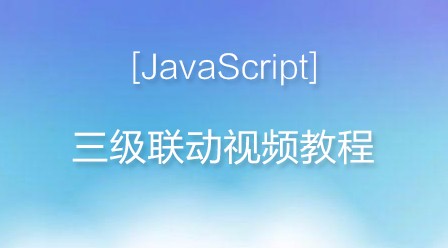java 实现双向链表实例详解
双向链表是一个基本的数据结构,在Java中LinkedList已经实现了这种结构,不过作为开发者,也要拥有自己显示这种结构的能力。话不多说,上代码:
首先是链表的节点类:
/**
* 链表节点
* @author Administrator
*
* @param <T>
*/
public class ChainNode<T> {
private T data;
//对象编号
private int dataNo;
public ChainNode<T> nextChainNode;
public ChainNode<T> preChainNode;
public ChainNode(T data, ChainNode<T> nextChainNode,
ChainNode<T> preChainNode) {
this.data = data;
this.nextChainNode = nextChainNode;
this.preChainNode = preChainNode;
}
public ChainNode(T data) {
this.data = data;
}
public int getDataNo() {
return dataNo;
}
public void setDataNo(int dataNo) {
this.dataNo = dataNo;
}
public void setData(T data) {
this.data = data;
}
public T getData() {
return data;
}
}然后是链表:
<pre name="code" class="java">/**
* 链表实现类
* @author Administrator
*
* @param <T>
*/
public class Chain<T> {
//头节点
private ChainNode<T> headNode;
//末尾节点指针
private ChainNode<T> lastNode;
private int size;
//创建链表就创建头节点
public Chain() {
this.headNode = new ChainNode<T>(null);
this.lastNode = headNode;
}
//增加一个节点
public void addNode(T data) {
ChainNode<T> node = new ChainNode<T>(data);
if(lastNode != null){
lastNode.nextChainNode = node;
node.preChainNode = node;
node.setDataNo(size);
lastNode = node;
size++;
}
}
//删除指定索引的节点
public void deleteNode(int dataNo) throws Exception {
if(getSize() == 0){
throw new Exception("chain is empty");
}
for (ChainNode<T> node = headNode.nextChainNode;node != null;node = node.nextChainNode) {
if(node.getDataNo() == dataNo){
node.preChainNode.nextChainNode = node.nextChainNode;
if(node.nextChainNode != null){
node.nextChainNode.preChainNode = node.preChainNode;
}
node.nextChainNode = null;
node.preChainNode = null;
size--;
//重新设置节点的编号
for (ChainNode<T> chainNode = node.nextChainNode;chainNode != null;chainNode = chainNode.nextChainNode) {
chainNode.setDataNo(chainNode.getDataNo()-1);
}
return;
}
}
throw new Exception("the corresponding data that can not be found");
}
//获取指定索引的节点
public T get(int dataNo) throws Exception {
if(getSize() == 0){
throw new Exception("chain is empty");
}
for (ChainNode<T> node = headNode.nextChainNode;node != null;node = node.nextChainNode) {
if(node.getDataNo() == dataNo){
return node.getData();
}
}
throw new Exception("the corresponding data that can not be found");
}
//修改对应索引的节点
public void set(int dataNo,T data) throws Exception {
if(getSize() == 0){
throw new Exception("chain is empty");
}
for (ChainNode<T> node = headNode.nextChainNode;node != null;node = node.nextChainNode) {
if(node.getDataNo() == dataNo){
node.setData(data);
return;
}
}
throw new Exception("the data that is to be modified can not be found");
}
//是否包含对应数据的节点
public boolean isContains(T data) throws Exception {
if(getSize() == 0){
throw new Exception("chain is empty");
}
for (ChainNode<T> chainNode = headNode.nextChainNode;chainNode != null;chainNode = chainNode.nextChainNode) {
if(chainNode.getData() == data){
return true;
}
}
return false;
}
//获取节点数量(不含头节点)
public int getSize() {
return size;
}
}测试一下:
public class ChainTest {
public static void main(String[] args) throws Exception{
String oneString = "one";
String twoString = "two";
String threeString = "three";
String fourString = "four";
Chain<String> chain = new Chain<String>();
chain.addNode(oneString);
chain.addNode(twoString);
chain.addNode(threeString);
chain.addNode(fourString);
for (int i = 0; i < chain.getSize(); i++) {
String string2 = chain.get(i);
System.out.println(string2);
}
try {
String string = chain.get(2);
System.out.println("the data of the second node is"+string);
System.out.println(chain.isContains(fourString));
chain.set(1, "haha");
System.out.println("modify chain");
for (int i = 0; i < chain.getSize(); i++) {
String string2 = chain.get(i);
System.out.println(string2);
}
chain.deleteNode(3);
System.out.println("delete one node");
for (int i = 0; i < chain.getSize(); i++) {
String string2 = chain.get(i);
System.out.println(string2);
}
} catch (Exception e) {
// TODO Auto-generated catch block
e.printStackTrace();
}
}
}结果:
one two three four the data of the second node isthree true modify chain one haha three four delete one node one haha three
以上就是java双向链表实现的示例代码分享的详细内容,更多请关注php中文网其它相关文章!



















